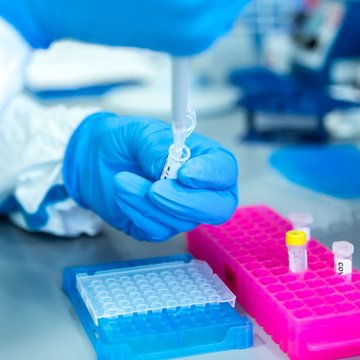
Final results of the NEURORECON project: Gene therapy takes spinal cord injury treatment a step further, and helps restore axon
Damaged nerve fibres in the spinal cord could be restored by gene therapy, which could then trigger the recovery and growth of axons, the outgrowths of nerve fibres. Successful experiments on laboratory animals have been carried out by scientists at the Institute of Experimental Medicine of the CAS. Rats have regained sensitivity in their hind limbs to almost pre-injury levels. Scientists have been working for six years to develop treatment methods for nerve diseases.
Injuries, tumours, degenerative or vascular diseases can cause spinal cord injuries in which nerve fibres or axons of nerve cells are severed. As a result of the injury, these cease to carry nerve signals between individual nerve cells, causing loss of sensitivity and muscles below the level of damage to atrophy.
Pushing the boundaries of neuroscience research and the treatment of nervous system diseases is the aim of the Centre of Reconstructive Neuroscience’s NEURORECON project. It began at the Institute of Experimental Medicine in 2017 and is led by world-leading neuroscientist James Fawcett from the University of Cambridge.
Extraordinary success: restored sensitivity in limbs
The main achievement is the use of gene therapy, in which scientists inserted genes into injured neurons, allowing the neurons to communicate with intercellular material, which promoted axon repair and growth.
“In animals that had spinal cord injuries in the thoracic region, axons travelled up to 4-5 cm, and about a quarter of them reached the extended spinal cord,” says project leader Pavla Jendelová. This is an extraordinary achievement compared to previously published results. “On the treated side, the rats regained sensitivity in their hind limbs to almost pre-injury levels,” adds Jendelová.
New findings and a therapeutic agent
Another discovery with great potential for use in medical practice is new knowledge around intercellular matter. Until now, it has been considered a mere filler between nerve cells, but Neurorecon scientists have shed light on its other functions in the growth and organisation of the nervous system. They have also found that chemical manipulation of the cell mass with drugs in rodents with spinal cord injury increases the so-called neuroplasticity, the brain’s ability to develop and adapt to learn and receive information. Scientists have also tested a new drug that stimulates neuroplasticity. This is because in adulthood, intercellular material forms special networks around nerve cells (called perineural networks) that control learning and motor activity. Previous research has shown that when these networks are disrupted or removed by enzymatic substances, this has a beneficial effect on the injured spinal cord.
The NEURORECON project scientists focused on a drug that patients commonly use to treat gallbladder problems, but concurrently, research has shown that it regulates perineural networks.
“Our tests show that when rats are orally administered this drug, it excites their perineural networks and subsequently restores tissue plasticity and increases the number of new nerve fibres around the damaged tissue. The rats also improved their motor skills in walking up the ladder,” explains Pavla Jendelová, of the effects of the promising drug.
Continued research
In the future, Dr. Jendelová’s group aims to continue to develop gene therapy and find suitable ways to deliver genes to cells. They also want to continue researching suitable drugs that affect perineural networks. “Before a drug can go beyond the doors of our laboratories, it will need to be thoroughly tested for the right dosage and monitored for possible side effects,” emphasises Pavla Jendelova.
The promising successes of the NEURORECON project will be followed up by research in a new project. It is called the Centre of Excellence in Regenerative Medicine and has received support from the Jan Amos Komenský Operational Programme. Together with scientists from the Institute of Experimental Medicine of the CAS, four other academic institutes, five colleges and universities and the University Hospital Hradec Králové will participate in the project.
Source: Institute of Experimental Medicine of the CAS
Official Press Release: HERE
